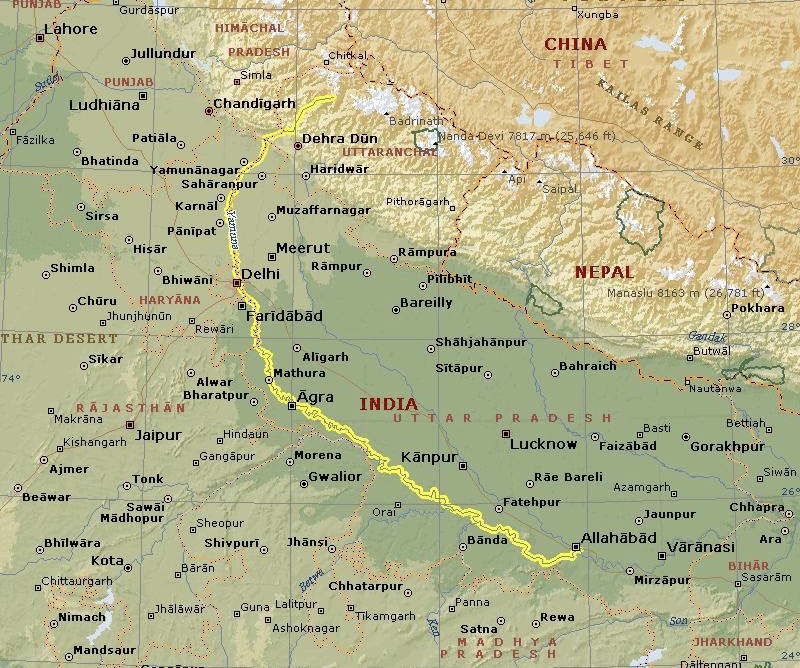Biodiversity & Environment
High Level of Ammonia in Yamuna
- 30 Jul 2020
- 3 min read
Why in News
Recently, high levels (around 3 parts per million) of ammonia in the Yamuna river has been detected in Delhi which led to the disruption of water supply in Delhi.
- As per the Bureau of Indian Standards (BIS), the acceptable maximum limit of ammonia in drinking water is 0.5 parts per million (ppm)
Key Points
- Ammonia:
- Its chemical formula is NH3.
- It is a colourless gas and is used as an industrial chemical in the production of fertilisers, plastics, synthetic fibres, dyes and other products.
- It occurs naturally in the environment from the breakdown of organic waste matter, and may also find its way to ground and surface water sources through industrial effluents, contamination by sewage or through agricultural runoff.
- Effect of High Level of Ammonia:
- Ammonia reduces the amount of oxygen in water as it is transformed to oxidised forms of nitrogen. Hence, it also increases Biochemical oxygen demand (BOD).
- If the concentration of ammonia in water is above 1 ppm it is toxic to fishes.
- In humans, long term ingestion of water having ammonia levels of 1 ppm or above may cause damage to internal organs.
- Treatment:
- Mixing of freshwater with ammonia polluted water.
- Chlorination.
- Chlorination is the process of adding chlorine or chlorine compounds such as sodium hypochlorite to water.
- This method is used to kill certain bacteria and other microbes in tap water. However, chlorine is highly toxic.
- Long Term Solution:
- Stringent implementation of guidelines against dumping harmful waste into the river.
- Making sure untreated sewage does not enter the water.
- Maintain a sustainable minimum flow, called the ecological flow.
- Ecological flow is the minimum amount of water that should flow throughout the river at all times to sustain underwater and estuarine ecosystems and human livelihoods, and for self regulation.
Yamuna
- The river Yamuna, a major tributary of river Ganges, originates from the Yamunotri glacier near Bandarpoonch peaks in the Mussoorie range of the lower Himalayas in Uttarkashi district of Uttarakhand.
- It meets the Ganges at the Sangam in Prayagraj, Uttar Pradesh after flowing through Uttarakhand, Himachal Pradesh, Haryana and Delhi.
- Length: 1376 km
- Important Dam: Lakhwar-Vyasi Dam (Uttarakhand), Tajewala Barrage Dam (Haryana) etc.
- Important Tributaries: Chambal, Sindh, Betwa and Ken.





